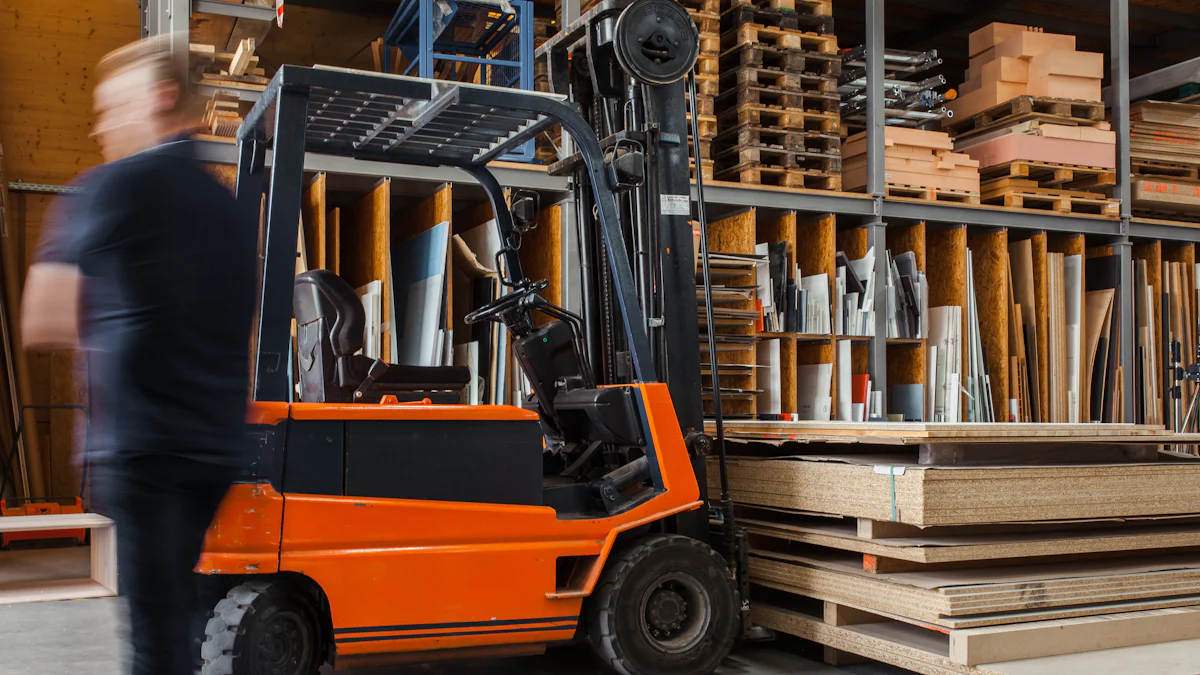
Welcome to the essential guide on Pallet Jack operation. These tools play a crucial role in material handling, ensuring efficiency and safety in various industries. In this blog, we focus on practical tips and guidelines to help you master the art of using a Pallet Jack effectively. Whether you’re a seasoned operator or new to this equipment, these insights will enhance your skills and keep you safe on the job. Can a Pallet Jack lift a car?
Understanding the Basics of a Pallet Jack
Types of Pallet Jacks
Manual pallet jacks, also known as Hand Pallet Trucks, are manually operated and ideal for smaller storage areas due to their compact design. On the other hand, Electric Pallet Jacks are motorized, making them efficient for handling heavier loads and stacked pallets with ease.
Key Components
Handle
The handle of a pallet jack serves as the control center, allowing you to steer and operate the equipment smoothly. It provides a comfortable grip for easy maneuvering in various work environments.
Forks
Pallet Jack forks are essential components that slide under pallets to lift and transport goods. Ensuring the forks are inserted fully under the pallet guarantees stable weight distribution during operation.
Wheels
Equipped with sturdy wheels, a pallet jack can move effortlessly across different surfaces. The wheels support the load weight and enable smooth navigation around warehouses or loading docks.
How a Pallet Jack Works
Lifting Mechanism
When operating a pallet jack, the lifting mechanism raises or lowers the forks to elevate or lower loads. Understanding how to control this mechanism ensures safe and efficient handling of goods.
Steering and Maneuvering
Steering is controlled by moving the handle in the desired direction, allowing you to navigate corners and tight spaces effectively. Mastering steering techniques enhances your ability to maneuver pallet jacks with precision.
Safety Guidelines for Using a Pallet Jack

Pre-Operational Checks
Inspecting the Pallet Jack
Begin your safety routine by thoroughly examining the Pallet Jack before operation. Look for any signs of wear or damage on the equipment. Check that all parts are functioning correctly to ensure safe usage.
Checking the Load
Next, assess the load you intend to transport with the Pallet Jack. Confirm that it is within the weight capacity of the equipment. Ensure that the load is stable and properly positioned on the pallet before moving it.
Proper Lifting Techniques
Positioning the Forks
When preparing to lift a load, position the forks of the Pallet Jack evenly under it. This ensures balanced weight distribution and prevents tipping during transportation. Centering the load properly is crucial for safe handling.
Lifting the Load
Engage the lifting mechanism of the Pallet Jack smoothly to raise the load off the ground. Use controlled movements to avoid sudden shifts in weight. Remember to keep a clear path ahead while lifting to prevent accidents.
Safe Maneuvering Practices
Navigating Corners
While maneuvering with a loaded Pallet Jack, approach corners carefully and maintain a wide turning radius. Slow down as you navigate sharp bends to prevent collisions or tip-overs. Always prioritize safety over speed.
Avoiding Obstacles
Scan your surroundings for any obstacles that may obstruct your path when operating a Pallet Jack. Clear away debris or items that could cause tripping hazards. Maintain focus on your route to ensure smooth and safe movement.
Load Handling Safety
Balancing the Load
To ensure stability and prevent accidents, balance is key when handling loads with a Pallet Jack. When the load is unevenly distributed, there’s a higher risk of tipping over, endangering both the operator and the goods being transported. Properly distributing the weight across the forks maintains control and minimizes potential hazards.
- Always center the load under the forks to maintain equilibrium.
- Avoid overloading one side of the pallet; distribute weight evenly.
- Secure loose items on the pallet to prevent shifting during transport.
Securing the Load
Securing your load is crucial for safe transportation and preventing damage or injuries. A securely placed load reduces the chances of it slipping off during movement, ensuring a smooth and accident-free operation. Taking a few extra moments to secure your load properly can save time and prevent costly accidents.
- Utilize straps or bands to secure irregularly shaped items.
- Double-check that all items are stable before moving.
- Inspect the load for any protruding objects that could pose a safety risk.
Tips for Efficient Use of a Pallet Jack

Planning Your Route
Identifying the Best Path
Begin by observing your surroundings to determine the most efficient route. Look for clear pathways that allow smooth movement without obstacles. Prioritize safety by choosing paths with good visibility to avoid potential hazards.
Minimizing Obstacles
When planning your route, focus on minimizing any obstructions that could impede your progress. Clear away debris or objects that may obstruct the pallet jack’s path. By ensuring a clutter-free environment, you enhance safety and efficiency during operation.
Optimizing Load Placement
Even Distribution
Ensure that the load is equally distributed on the pallet to maintain balance. Placing heavier items at the bottom and lighter ones on top helps stabilize the load during transportation. Proper weight distribution prevents accidents and promotes safe handling.
Stacking Techniques
Implement effective stacking techniques to maximize space utilization on the pallet. Stack items securely, ensuring they are stable and unlikely to shift during transport. By organizing the load efficiently, you can prevent items from falling off and streamline your material handling processes.
Maintenance and Care
Regular Inspections
Make it a habit to inspect the pallet jack regularly for any signs of wear or damage. Check for loose bolts, worn-out wheels, or hydraulic issues that may affect performance. Promptly addressing maintenance needs ensures safe operation and prolongs the equipment’s lifespan.
Lubrication and Cleaning
Keep your pallet jack in optimal condition by applying lubrication to moving parts as recommended by the manufacturer. Regular cleaning removes dirt and debris that can hinder functionality. By maintaining cleanliness and proper lubrication, you extend the longevity of your equipment.
Recall the vital safety and efficiency tips shared throughout this guide. Embrace these practices diligently to safeguard yourself and others in the workplace. Remember, prioritizing safety is paramount when operating a pallet jack. Always seek additional information or training to enhance your skills further and ensure a secure work environment. Stay informed, stay safe!
Post time: Jun-21-2024
